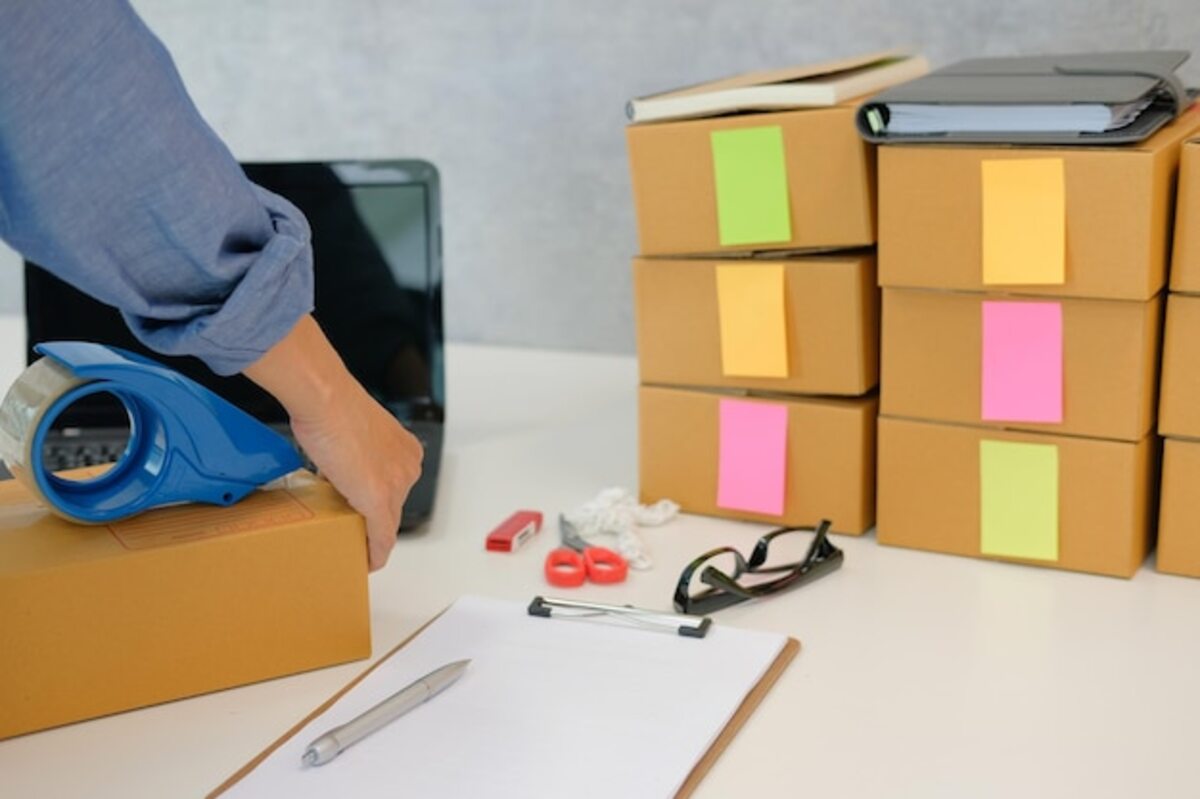Create a moving map for a hassle-free experience.

Create a moving map and turn this experience into a hassle-free adventure. This article will guide you through creating a strategic plan that will allow you to organize every detail, from packing to arriving at your new home. With a clear and practical approach, you will learn to anticipate problems and enjoy the process, ensuring that each step is smooth and efficient. Get ready to move with confidence!
The importance of planning before moving.
Planning is the key to a successful move, and its importance cannot be underestimated. Before packing the first box, it is essential to define a timeline that includes every stage of the process. This includes everything from selecting the moving date to organizing transportation and arranging your new home. Having a clear plan allows you to reduce the stress associated with last-minute surprises and ensure that every detail is under control. Anticipation enables you to address potential issues before they become real problems.
Additionally, good planning helps you optimize resources and time. Creating a detailed inventory of your belongings not only facilitates the packing process but also ensures that nothing is lost during the move. By categorizing items by category or room, you can start getting rid of unnecessary things and make a more efficient move. In summary, taking the time to plan before moving transforms this potentially chaotic experience into an opportunity to start off on the right foot in your new home.
2. Digital tools to create your moving map
To facilitate the creation of your moving map, there are various digital tools that can make the task much simpler and more organized. Applications like Trello or Asana allow you to create visual boards where you can list all the tasks you need to complete, assign deadlines, and even add reminders. These platforms are ideal for breaking the process down into stages, from the initial planning to moving day, ensuring that no important detail is overlooked. Additionally, you can share these boards with family or friends who will help you with the move, fostering effective collaboration.
Another option is to use specific moving applications like MoveAdvisor or Sortly. These tools are designed to handle every aspect of the move: from tracking the inventory of your belongings to creating a logistical plan for transportation. With features like customizable checklists and templates for labeling boxes, you will be able to better visualize what you are taking with you and what you need to leave behind. By integrating these digital tools into your moving process, you not only optimize your time but also minimize the stress associated with these significant changes in your life.
3. How to organize your belongings by areas
Organizing your belongings by areas is a key strategy to simplify the moving process. Start by identifying the different zones of your new home, such as the kitchen, bedroom, living room, and any other space you plan to use. Once you have a clear understanding of how the areas are distributed, assign each room to a specific group of objects. For example, group all kitchen items together and books in another section. This will allow you not only to pack more efficiently but also to make the unpacking process easier when you arrive at your new home.
Additionally, labeling each box with its contents and the corresponding room will help both you and the helpers stay organized throughout the move. Use colors to differentiate the areas; for example, you can use blue labels for the kitchen and green for the bedroom. This visual technique not only streamlines teamwork during loading and unloading but also reduces stress when searching for essential items in your new home. Remember that good organization not only improves the efficiency of the move but also makes this experience a much more pleasant process.
4. Establishing an effective timeline for the move
Establishing an effective timeline for the move is essential to ensure that each stage of the process is carried out in an organized manner and without setbacks. Start by defining key dates: the moving day, the time to begin packing, and the deadlines for making changes to services such as water, electricity, and internet connection. A good timeline will not only help you visualize what you need to do, but it will also allow you to assign specific tasks to different days, avoiding the accumulation of activities at the last minute. Remember to include breaks and extra time for unforeseen events; this can make the difference between a stressful experience and a more controlled one.
Once you have your dates defined, break down each task into smaller steps. For example, if you decide to start packing a week before the move, set daily goals such as packing specific rooms or sorting items by categories. Using tools like digital calendars or organization apps can be helpful to keep a visual track of your progress. Additionally, consider involving family or friends in certain activities; this will not only make the work more enjoyable but also strengthen bonds as you prepare together for this new stage. With a clear and well-structured timeline, you can enjoy the journey to your new home without losing sight of any essential details.
5. Tips for choosing the best moving company
Selecting the best moving company is crucial to ensure that your moving experience is as smooth as possible. To start, research various options in your area and pay attention to reviews from other customers. Personal recommendations are invaluable, so don’t hesitate to ask friends or family about their previous experiences with moving companies. Make sure to verify if they are properly licensed and insured; this will not only protect you in case of damages but also indicates their professionalism and seriousness. Once you have narrowed down your options, request detailed quotes from several companies. Compare not only the prices but also the services offered, such as packing, loading and unloading, and any additional services like temporary storage. Keep in mind that the cheapest option is not always the best; evaluate the quality of customer service and their availability to address questions or issues. By choosing a reliable company, you’ll be one step closer to enjoying a hassle-free move.
Don't forget to read the contract carefully before signing it. Make sure you understand all the clauses and conditions, including policies regarding delays or damages during the move. Taking the time to choose wisely can make the difference between a stressful move and a successful experience in your new home.
6. Essential packing lists: what you must not forget to pack
When planning a move, it's essential to have checklists that ensure you don't forget anything important. Before you start packing, take some time to create several lists: one for the essential items you will need during the process, another for the items that will go in the first night at your new home, and of course, a final list that includes everything that needs to be packed and moved. This will help you stay organized and avoid unpleasant surprises when you arrive at your new space. Do this exercise with other family members or housemates to ensure everyone is aligned.
In addition to general lists, consider including specific items based on your particular needs. For example, if you have pets or small children, make sure to include their essential items such as food, toys, and medical supplies. Also, don't forget important documents like lease agreements, personal papers, and any other crucial paperwork. By creating a detailed and personalized inventory of what you shouldn't forget to pack, you can take with you not only your physical belongings but also the peace of mind knowing that you are well prepared for this new stage in your life.
7. Strategies to make moving day easier
To make moving day easier and less stressful, it is essential to follow some simple yet effective strategies. First, make sure you have a detailed plan that includes schedules and assigned tasks. Start by making a list of everything you need to take and organize the boxes by each room. Labeling each box with its contents and the place it belongs in your new home will greatly facilitate the unpacking process. Additionally, consider creating a designated area for essential items you will need immediately, such as personal hygiene products or kitchen utensils. Having everything on hand will allow you to adapt quickly to your new environment.
Another key strategy is to have extra help, whether from friends, family, or professionals. Don't hesitate to ask for support; many hands make the work lighter and faster. Additionally, establish clear roles for those who are accompanying you during the move: some can take care of transportation while others organize the space in your new home. Lastly, do not underestimate the importance of staying hydrated and taking regular breaks throughout the day; this will not only keep your energy high but also help reduce the stress associated with this intense activity. Remember that the move is just one part of the process; enjoying the journey to your new home is equally important.
8. What to do upon arriving at your new home: installation and adaptation
Upon arriving at your new home, the first step is to ensure that all the basic utilities are functioning. This includes checking the supply of water, electricity, and gas. If you arranged services in advance, make sure they were activated correctly before your arrival. Additionally, it is advisable to familiarize yourself with the heating or cooling systems and check that they are working properly. Do not underestimate the importance of conducting a quick inspection to identify any issues that need immediate attention; this will help you feel more comfortable from the very beginning.
Adapting to a new space can be both exciting and challenging. Take time to unpack your belongings following a logical plan: start with essential areas like the kitchen and bedroom to establish a functional space from the beginning. As you organize each room, take the opportunity to get rid of unnecessary items and reorganize your things more efficiently. Additionally, give yourself time to explore your new neighborhood; getting to know local shops, parks, and nearby services will not only make your daily life easier but also allow you to start building connections in your new community.



